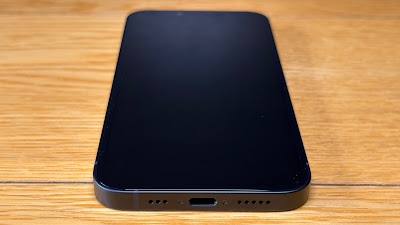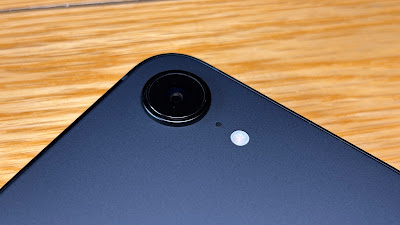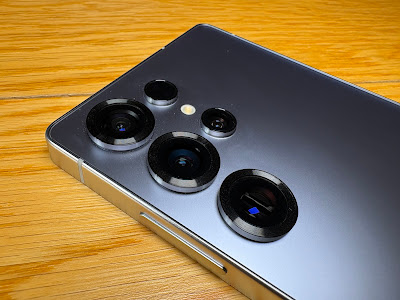Oppo is a big player global smart phone sales, ranking fourth or fifth in market share depending on which survey you read and which quarter you're referring to.
Here in New Zealand, Oppo ranks a clear third and yet time and again, when people ask me which phone I'm using, they claim they've never even heard of Oppo.
It's weird.
More often than not, the reason they're asking me about my phone is because they've seen the photos I've been taking. Oppo has always taken a camera-first approach to smart phones.
And this year's Reno series is no exception...
At NZ$699, NZ$999 and NZ$1399, the Reno13 F, Reno13 and Reno13 Pro are all priced to be a very competitive alternative to devices with similar specs from the likes of Samsung and Apple.
It's hard to make a like-for-like comparison though, because while one handset may have a superior camera, if it has an inferior chip running it, that doesn't count for much.
What I can do is compare the Reno13 Pro with the Reno13 F - because I've been sent both to test.
Firstly, let me just say how impressed I was with the sub-$700 device. I was expecting a lot of compromises, especially with photo quality and the performance of the chip. I didn't need to worry.
Without getting to bogged down in the nerdy stuff, let's start with the chips; the Pro sports the MediaTek Dimensity 8350 while the F runs on Qualcomm's Snapdragon 6 Gen 1 Mobile Platform. Neither of these chips are the flagship product from their respective suppliers but those suppliers are both well regarded and I can't say I experienced any performance issues at all. Admittedly the Reno 13F wasn't quite as snappy as its twice-as-expensive sibling - but it still operated very smoothly, with apps installing and opening quite speedily. This is despite the Pro having 50% more RAM and twice the internal storage.
In fact, when it came to using both handsets, if I was judging them on usability alone, I couldn't honestly justify the $700 price difference.
Both are eSIM capable, which is a relief for me because I chucked my physical SIM card away years ago.
Likewise, both devices have large, 5,800mAh batteries, although the Pro will charge much faster with the 80W SuperVOOC power brick included in the box.
And that's how it is with most features on these two handsets; the Pro just adds that little bit extra. For example, both displays offer refresh rates at up to 120Hz but the screen on the Pro is bigger - 6.83-inches as opposed to 6.67-inches - and can run at a higher resolution, which means side by side the Pro looks clearer and a bit more colourful.
The Pro's screen is also protected by Corning Gorilla Glass 7i, which adds to its durability - although, because its flexible AMOLED display curves slightly at the edges, I did run into the old simultaneous touch problem; that's where my fat fingers register touches on the edges at the same time as what I'm trying to control in the middle of the screen. This results in nothing happening at all. It's a price I'm willing to pay though, because a curvy phone like this definitely feels more premium in the hand.
My review Reno13 Pro is Plume Purple, which reflects light in a very eye-catching way on the back panel. My Reno13 F is a much more subdued, Graphite Gray. Both phones come in both colours but again, the Pro is slimmer and feels less plasticky than the F model.
Both handsets carry an IP69 rating against dust and water. I don't think I've ever encountered an IP69-rated device before and I had to look up exactly what it means. Apparently, now you can not only drop your phone in the toilet, you can literally squirt it with a high-pressure hose. Which you might want to do if you've dropped it in the toilet, I guess?
I paired the same set of earbuds with both phones and was intrigued to discover how much better they worked with the Reno13 Pro. Turns out this is because the Pro connects using the latest Bluetooth 5.4 protocol which is much stronger and transmits at very low latency compared to the Bluetooth 5.1 on the Reno13 F. You'll need a decent pair of buds to make the most of it though - luckily, Oppo is currently offering its own Enco Air4 Pro buds for free with a Reno13 Pro purchase. I haven't tried the Enco Air4 Pros but I do know they are also Bluetooth 5.4 enabled.
Camera performance is where the Pro really starts to pull ahead. As I said in the intro, I've never met an Oppo phone that didn't take great pics but I'd argue the Reno13 Pro can hold its own with the best of the best. On the back, both Pro and F have 50MP wide and 8MP ultra-wide sensors, although when you really dig down, the Pro's lenses are more well endowed.
The third sensor on the F is a 32MP macro lens - so yes, it'll do great close-ups but I'd rather have the 50MP telephoto sensor on the Pro. That means way better zoom shots and quality close-ups too.
It's not a level playing field around on the front side either. The F has a 32MP camera which is very respectable - especially for a phone in this price-range. You can shoot lovely bokeh (blurred background) portraits if you like and even create panorama selfies. You can shoot dual-view video (using front and rear cameras simultaneously) and the selfie-cam can film in 1080p@30fps - very good quality video for a forward-facing camera.
But not as good as what the Pro can do. 4K@60fps from a selfie-cam? Crazy. You get auto-focus too.
Don't get me wrong. The Reno13 F's camera performance is great. It's just that the Pro's is quite a bit greater.
Both phones have an underwater mode though. So that whole IP69 thing must be for real, right?
Now for my pet peeve. As usual, Oppo has left wireless charging off both devices. I wouldn't expect it from the $699 device but every iPhone charges wirelessly and has done for years. As do Samsung's Galaxy S and Z series devices. Because Oppo's SuperVOOC charging has always worked so well, effectively out-charging the opposition, it's never made wireless a priority but that needs to change. I can't be the only one who finds plugging and unplugging my phone clumsy and annoying - not to mention the fact cables, plugs and USB ports break and wear out a lot more often than wireless charging pads do.
Or is that just me?
If it is, and if pure camera performance is your priority, you won't find many phones that can out-photo the Reno13 Pro, certainly not at NZ$1399. On the other hand, if you just want a phone that'll take a licking, keep on ticking and is more feature-packed than many others in the below $700 category, the Reno13 F is definitely worth a look. And by the way, it's 5G, so could be the perfect replacement for those of you with older devices that are going to stop working at the end of the year.
Click here for more information and pricing on the Oppo Reno13 Pro.
Click here for more information and pricing on the Oppo Reno13 F.
















































